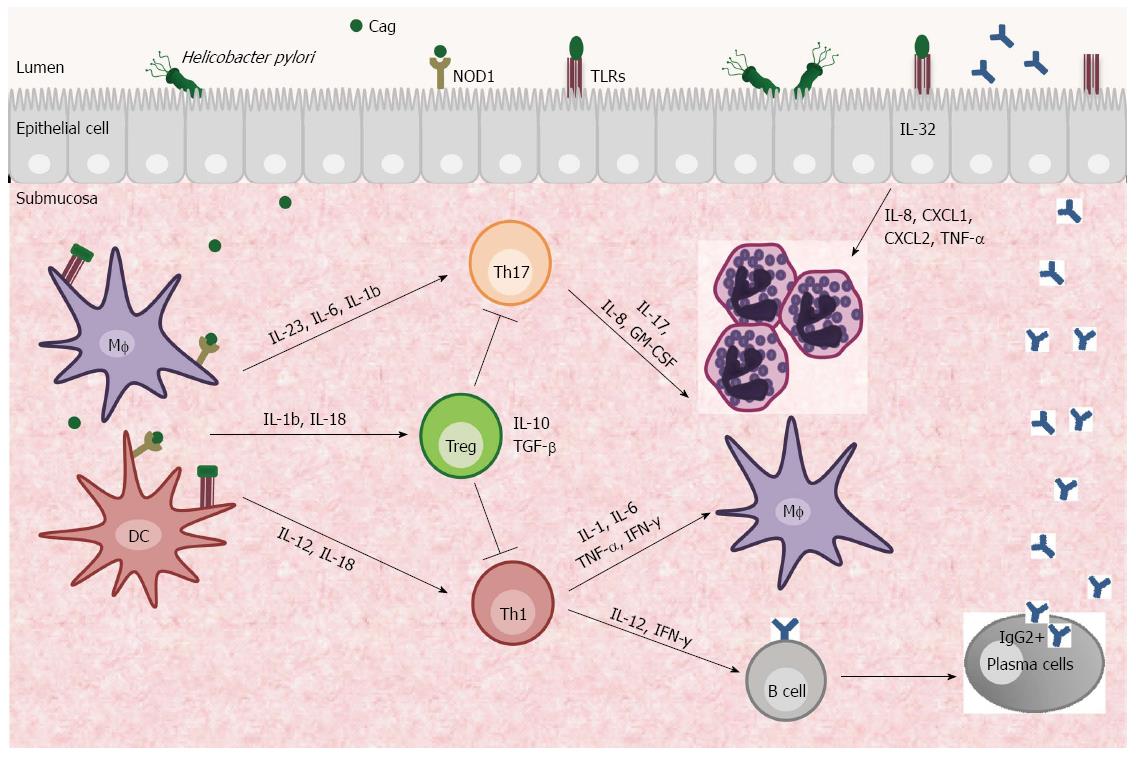Copyright
©2014 Baishideng Publishing Group Co.
World J Gastroenterol. May 14, 2014; 20(18): 5235-5243
Published online May 14, 2014. doi: 10.3748/wjg.v20.i18.5235
Published online May 14, 2014. doi: 10.3748/wjg.v20.i18.5235
Figure 1 Immunological response elicited by Helicobacter pylori infection.
The presence of Helicobacter pylori (H. pylori) cytotoxins (VacA, CagA, CagL and GGT) and PAMPs (flagella, lipopolysaccharide) in the gastric mucosa activate antigen-presenting cells (APCs), such as dendritic cells and macrophages. These cells stimulate the adaptive immune response through the production of cytokines, such as IL-12 and IL-23, which activate Th1 and Th17 cells, respectively. The cytokines induce an inflammatory process characterization by the recruitment of neutrophils, lymphocytes, macrophages and dendritic cells. Th1 cells release IL-2 and IFN-γ and stimulate B cell differentiation and anti-H. pylori IgG production from secretory plasm cells. Furthermore, epithelial cells recognize the H. pylori antigens and produce IL-32, which induces chemokines and contributes to inflammation. In individuals infected with CagA+ H. pylori, Treg cells are activated by APCs through IL-18 and IL-1β to modulate the immune response and contribute to persistent infection. Consequently, H. pylori-associated pathologies, such as chronic gastritis and gastric adenocarcinoma, may develop. MF: Macrophages; DC: Dendritic cells; PAMPs: Pathogen-Associated Molecular Patterns.
-
Citation: Figueiredo CA, Marques CR, Costa RDS, Silva HBFD, Alcantara-Neves NM. Cytokines, cytokine gene polymorphisms and
Helicobacter pylori infection: Friend or foe? World J Gastroenterol 2014; 20(18): 5235-5243 - URL: https://www.wjgnet.com/1007-9327/full/v20/i18/5235.htm
- DOI: https://dx.doi.org/10.3748/wjg.v20.i18.5235









